Cruise Industry Update
Last updated on September 18th, 2023
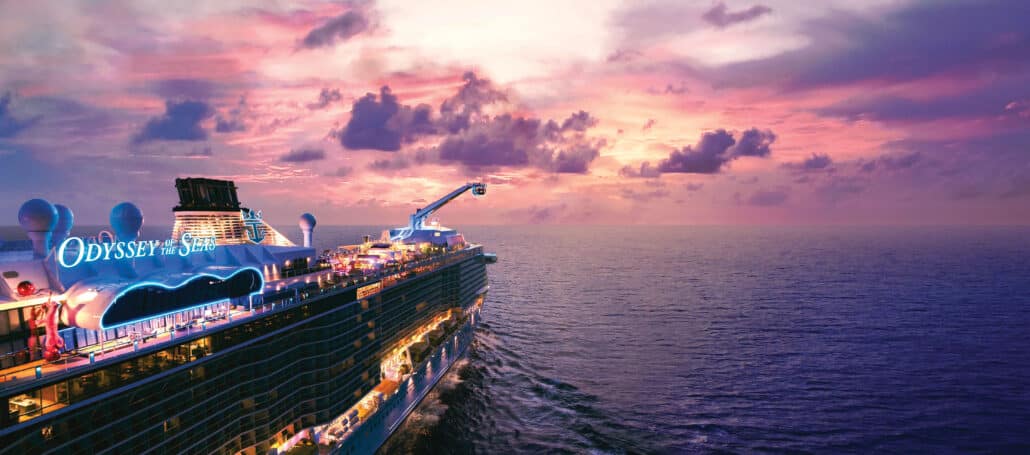
Cruise Industry Present Day & Forecast
There’s no denying that the past few years have collectively been difficult for much of the world, and the cruise industry was no different as it was one of the hardest hit industries during the pandemic. As the rest of the world recovers and life goes back to normal, the same can be said for cruise! With 31.5 million passengers expected to cruise in 2023, it’s safe to say that the cruise industry is booming once again. Cruise is a resilient industry, and it continues to be one of the fastest-growing sectors of tourism.
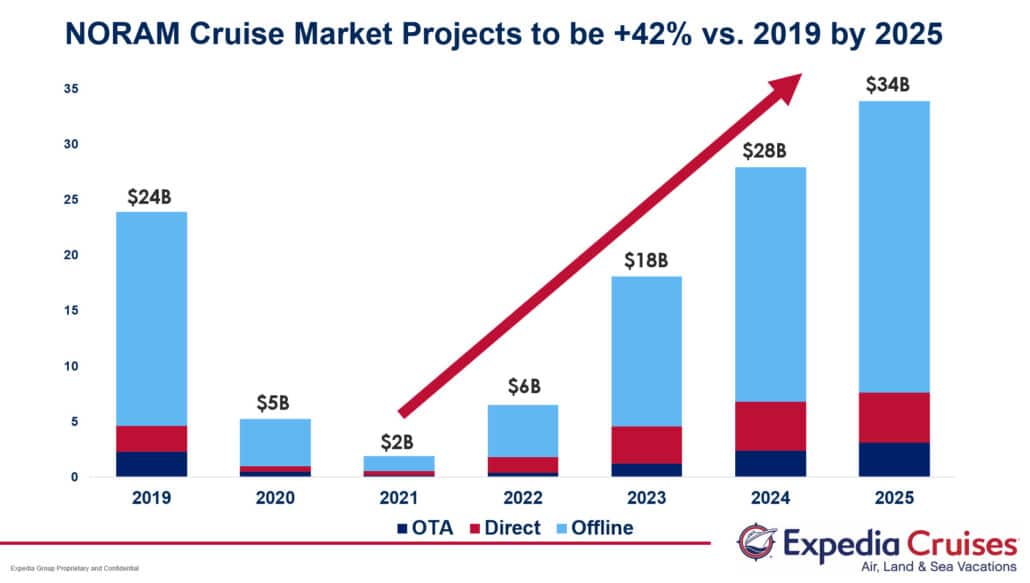
Cruise Industry Overview Quick Facts (CLIA):
- 31.5 million cruise passengers expected to sail in 2023
- 70+ new cruise ships on order between now and 2027
- 65% of cruisers work with a traditional travel agent
- 85% of travelers who have cruised before say they will cruise again
- 75% of the U.S. population is within driving distance of a cruise port
- 88% of Millennials and 86% of Gen-X travelers say they will cruise again
- Solo cruise travel is on the rise
- Younger cruise travelers—from Gen Z to Millennials to Gen X—turn to travel advisors to book their cruises more so than any other generation
- North America remains the largest cruise market
- Caribbean remains the top destination for cruisers
- Average age of a cruiser is now 46 years old
- Cruise industry is expected to reach $25.1B in revenue by the end of 2023
- Cruise industry supports over 1M jobs

Cruise Industry Investment
The cruise industry has invested over $50 billion dollars towards driving innovation and transformations over the next 4 years. In pursuit of a more responsible, efficient, inclusive, and enjoyable vacation experience, cruise lines are investing in LNG-powered ships, eco-friendly cruise travel, enhanced use of technology onboard, more onboard entertainment and activities, multi-generational experiences, and much more!
New Ships
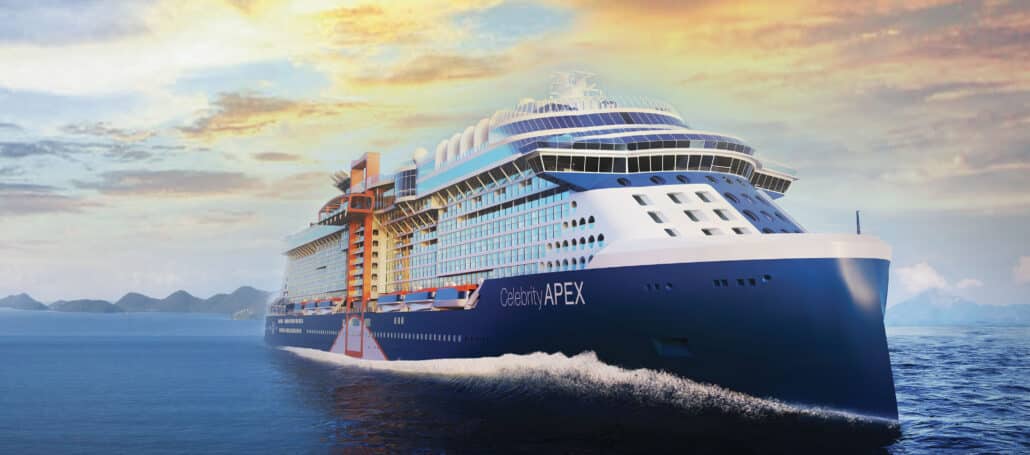
One of the main areas that cruise lines have, and will continue to, invest heavily in is their ships! A fleet of brand-new cruise ships will set sail, bringing with them a wave of excitement, relaxation, and unforgettable experiences. Cruisers will have the opportunity to immerse themselves in a world of advanced technology and unparalleled comfort, indulging in luxury as they soak up the local culture, or embark on thrilling adventures. To read more about the new ships of 2023, head over to our blog: The 12 Most-Anticipated Cruise Ships of 2023.
Private Islands
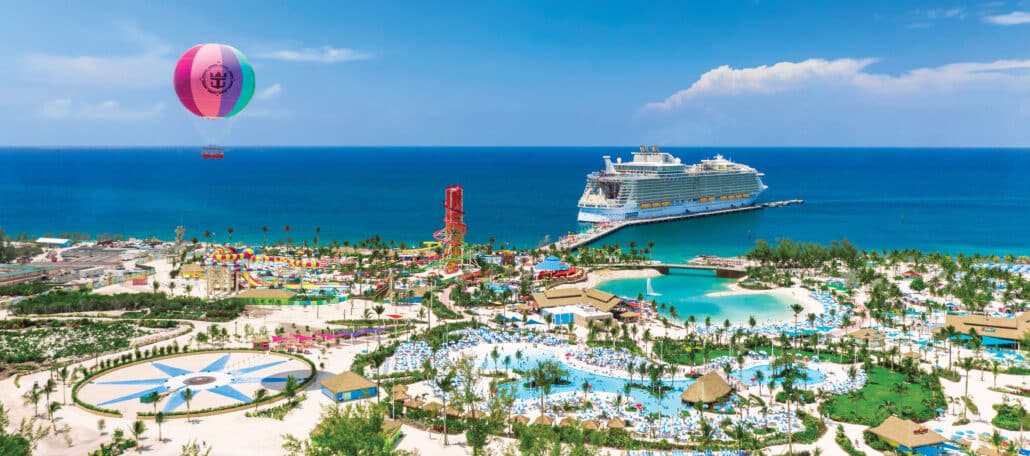
The private islands of cruise lines have always been some of the top destinations for travelers sailing to the Caribbean or Panama Canal. These exclusive retreats have something for everyone, from eco-tours and water excursions to theme park thrills and beach side lounging. With the rise of popularity of these private islands, cruise lines have invested billions of dollars into enhancing and expanding their private islands; creating over-the-top experiences to all those who visit. Here are a few cruise lines and their private islands:
- Royal Caribbean International – Perfect Day at CocoCay, Bahamas
- Royal Caribbean International & Azamara Club Cruises – Labadee, Haiti
- Princess Cruises & Carnival Cruise Line – Princess Cays, Bahamas
- Disney Cruise Line – Castaway Cay, Bahamas
- Holland America Line & Carnival Cruise Line – Half Moon Cay, Bahamas
- Norwegian Cruise Line & Regent Seven Seas Cruises – Great Stirrup Cay, Bahamas
- Norwegian Cruise Line, Regent Seven Seas Cruises, Oceania Cruises – Harvest Caye
- MSC Cruises – Ocean Cay MSC Marine Reserve, Bahamas
- Virgin Voyages – The Beach Club at Bimini
New Ports/Port Enhancements
Is there a better sign of a booming cruise industry than cruise lines adding/enhancing their embarkation and disembarkation ports? Royal Caribbean Group is a great example of how cruise lines are investing in the future by partnering with large infrastructure companies to withstand the volume of cruise passengers expected in the next few years.
“Our partnership with iCON is a unique opportunity to catapult us into the coming decades of port investments, build further financial strength, and provide exceptional cruising experiences, responsibility, to our guests at the best destinations in the world” – Jason Liberty, President and CEO of Royal Caribbean Group (cruisehive)
Several other cruise lines including, Carnival Corporation, Virgin Voyages, MSC Cruises, and Norwegian Cruise Line have invested, or are committed to invest, hundreds of millions of dollars in the coming years to enhance their port presence.
Industry Trends
Each year new trends emerge in the cruising industry that pave the way for the future of cruising. In 2019, we saw an increased demand for off the beaten path destinations, tech-driven features on ships, and an increase in working nomads – to name a few. In 2020, a big focal point of the industry was on decreasing the generational gap in cruisers and more options for solo travelers. Fast forward to 2023, cruising trends today include a focus on sustainable and responsible tourism, the use of tech onboard, younger generations being the future of cruise, the rise of expedition cruising, longer and more luxurious cruises for the seasoned travelers, and shorter cruises for first timers.
Environmental Sustainability
With a goal of net carbon neutral cruising by 2050, cruise lines are pursing innovative solutions, and investing billions, into sustainable cruising. But what exactly does this mean? For starters, almost all cruise lines are opting to use LNG for all new ships being built in the future. Liquified Natural Gas (LNG) are natural gasses that are drawn from the earth’s core and then are super cooled to become liquified natural gas. This liquified state makes the gas odorless, colorless, non-toxic, and non-corrosive. The advantages of adopting LNG are impressive as it creates a cheaper, more efficient, and more environmentally friendly gas. LNG releases zero sulfur, has 99% less particulate emissions, 85% less nitrogen oxide emissions, and 25% less greenhouse gas emissions. Using LNG will also result in a longer lifespan with less wear and tear on the engine, low maintenance costs, and cleaner emissions. For existing ships, the cost of converting to LNG would be too substantial so cruise lines are looking to other methods for these ships, such as exhaust gas cleaning systems.
An exhaust gas cleaning system, also known as a scrubber, allows ships to continue using heavy fueled oil, while reducing their Sulphur oxide and particulate matter emissions. In short, this scrubber will literally scrub away harmful sulfur oxides from exhaust gases. Adopting ECGS will allows ships to reduce their sulfur oxide levels by 98%, reduce total particulate matter by 50%, and reduce nitrogen oxides by 12%.
Furthermore, more and more ships are being fitted with advanced wastewater treatment systems, to ensure the quality of treated wastewater and equipped with the ability to receive shoreside power connectivity which allows ships to turn off their engines and tap into cleaner energy available at ports, cutting emissions and harmful toxins.
For more details on what cruise lines are doing to lessen their impact on the environment, here are a few cruise line sustainability websites:
- Carnival Corporation and PLC (Carnival Cruise Lines, Princess Cruises, Holland America Line, Seabourn, Cunard, Costa Cruises)
- Celebrity Cruises
- Disney Cruise Line
- MSC Cruises
- Norwegian Cruise Line
- Royal Caribbean International
Responsible Tourism
Responsible, or sustainable tourism, is just as important as environmental sustainability, as these practices often go hand in hand. As economically advantageous as it to draw hundreds, if not thousands, of visitors to a destination, the disadvantages of overcrowding, and careless behaviors by tourists, are a detriment to the unique heritage, landscape, and way of life of the places visited. As the demand for cruising increases steadily with each passing year, cruise lines are aware of their responsibility to not only preserve the physical land they allow passengers to traverse, but also to respect, protect, and value the culture and environment of the places they visit.
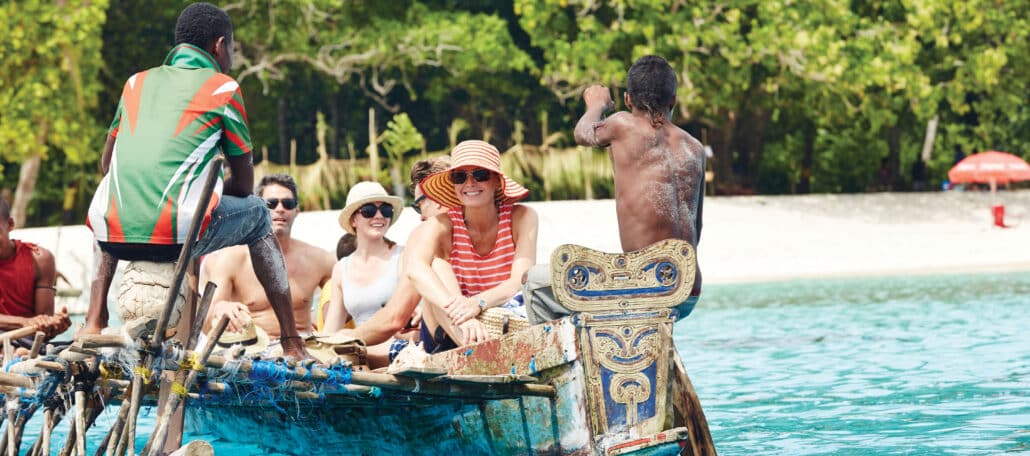
Cruise lines are working with local communities to brainstorm creative ways to manage the flow of tourists they bring to shore, as well as implementing the highest standards of responsible tourism (CLIA). For example, Princess Cruises embodies a concept of “socially conscious” cruising.
“It’s about creating a small group that have immersive training onboard, and then when they go ashore, it’s about doing things that are good for the local communities,” Vice President of North American Sales for Carnival Corp. and Princess John Chernesky said.
Other examples include how CLIA Cruise Lines, in collaboration with the Mayor’s office and the City Council, developed new measures to alleviate tourism flow issues in Dubrovnik; in Santorini, the cruise industry worked with local authorities on a new ship arrival management system to spread the flow of tourists visiting the system; and in Alaska cruise lines have implemented more stringent waste water requirements than even the communities on land (CLIA). Royal Caribbean International also offers more than 3,500 shore excursions that are GSTC-certified. To be certified by the Global Sustainable Tourism Council (GSTC), a shore excursion must be a one-of-a-kind experience that respects local culture and its surroundings.
Technology Onboard
From digital/AI check-in and boarding passes to touchless room entry and geo-locators for children on ships, cruise lines have fully embraced the new age of technology. Today’s cruisers expect a personalized and seamless experience, from embarkation to disembarkation, and everything in between, the modern cruiser will look to their phones or onboard technology for almost every aspect of their cruise experience.
Want a quick and seamless check-in to get onboard faster? You got it – just take a selfie and upload it to the app. Want to make reservations at your favorite restaurant? Easy – book it on your cruise app! Need to open your stateroom? No problem – tap your wristband to the door sensor! Want to know where your kids are on the ship? They’ve got you covered – your wristband also serves as a GPS locator onboard! And these are just a few of the incredible technological advancements fitted on ships these days. See below for a few more!
- “Zoe” on MSC’s newest ships serves as your own personal “Alexa or Siri”. Zoe is programmed to answer 800+ questions about excurions, onboard restaurants, and much more!
- On Virgin Voyages cruises you can shake the Virgin Voyages app (Shake for Champagne™) for a secret button to appear. With just one press of the button a bottle of champagne will be delivered to your stateroom.
- Locate your loved ones with the MedallionClass App on Princess Cruises
- Book a virtual balcony! It’s an inside stateroom with a floor-to-ceiling, wall-to-wall, high-definition LED screen that feeds live footage of the view your would have had in a balcony room (without the price tag!)
- Geo-locate your children with trackable bracelets such as those on Carnival Cruise Lines
Catering to Younger Generations
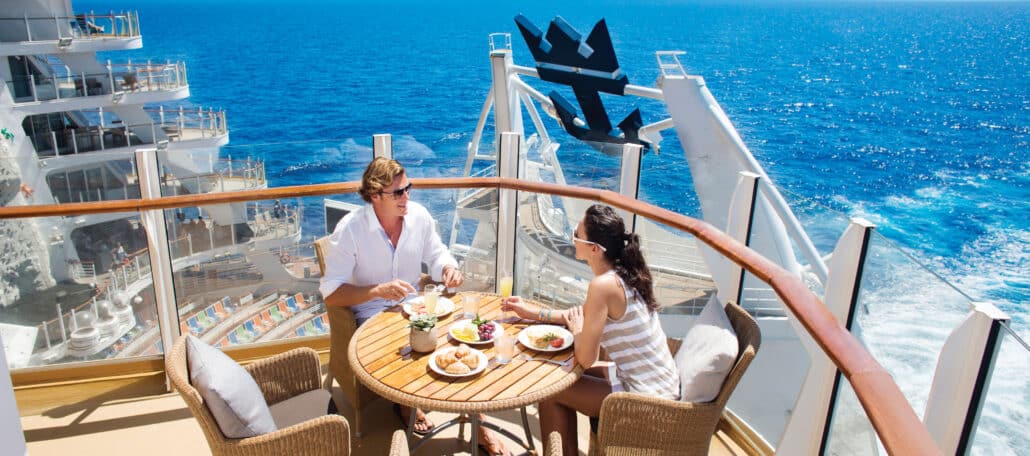
Retirees, empty-nesters, and old couples – this is what most people considered to be the cruiser demographic in the past. But not anymore! The cruising world has drastically changed as younger generations are favoring experiences and adventures over material goods. And the numbers don’t lie – cruising demographic has changed over the last few years with the average age of a cruiser dropping down to 46! Gen-X and Millennials are the most enthusiastic about planning a cruise vacation with 86% of Gen-X and 88% of Millennials planning to cruise again (CLIA). As the preference for experiences becomes an increasing trend, cruise lines are adapting by creating innovative, cutting-edge, and entertaining ships, as well as itineraries that cater to a younger crowd. These include, but are not limited to, music festivals at sea, remote destination itineraries, tech-inspired ships, and endless activities onboard.
It’s important to note that with all this attention given to younger generations, cruise lines have NOT forgotten about the older generations; their bread and butter that brought cruising to the forefront of vacation planning. There are still plenty of cruise lines, ships, and itineraries that cater to a more refined taste and traditional way of cruising, with elegantly designed staterooms, traditional dining rooms, and culture-rich onboard and off-shore experiences.
Rise of Expedition Cruising
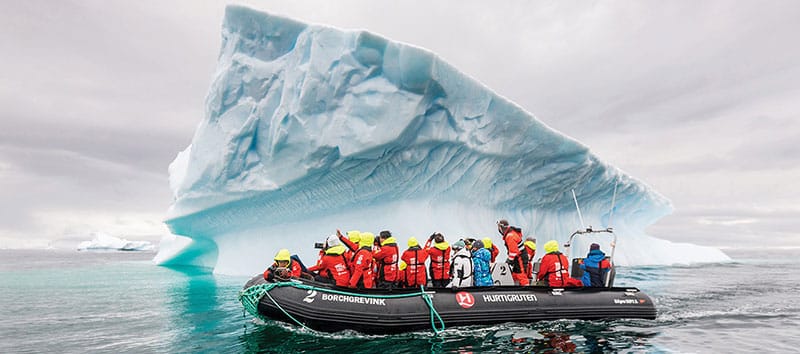
Who says you can’t have adventure AND luxury?! Small-ship expedition cruising is a hot trend that has slowly gained popularity over the past few years. Although these cruises come with a higher price tag, more and more cruisers are flocking to these itineraries that offer once-in-a-lifetime experiences. From the Arctic to the Galapagos Islands, expedition cruising allows adventure enthusiasts the perfect opportunity for eco-discovery in exotic lands, along with luxurious accommodations. Seabourn, Viking, Silversea, Hurtigruten, and Scenic Luxury Cruises & Tours are just a few of the cruise lines offering expedition cruising.
Longer, More Luxurious Cruises
With the increase in remote work, more and more cruisers have shown interest in longer, grander voyages. Longer cruises can range anywhere from 30 days to world cruises that are upwards of 200 days! These lengthy cruises allow travel aficionados the ability to visit several ports on their bucket list, all while unpacking once.
Shorter Cruises
Longer, more luxurious cruises aren’t the only one’s trending – shorter cruises have also picked up steam! Shorter cruises are under 7 days and allow travelers the opportunity to recharge over a few days, or sometimes just a weekend, at sea. The convenience of these “micro-cations” is a main selling point for cruise lines and travel agencies. Less planning, more affordable, and less paid time off required from work – what’s not to love?!
Solo Cruising
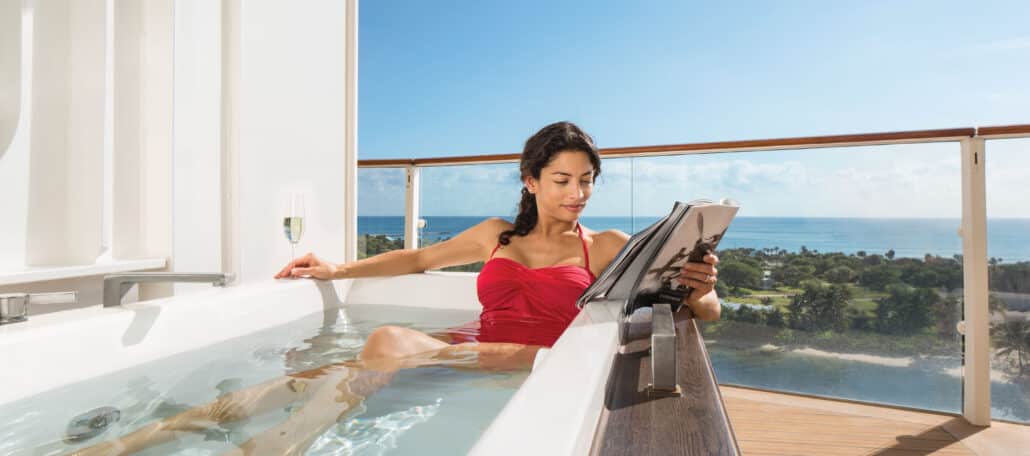
Solo cabins, although much smaller than double-occupancy cabins, are the answer solo travelers have been waiting for. The ability to unpack once, have all your meals included, and explore multiple destinations, all without paying a single-supplement fee, has made cruising a much more affordable and exciting vacation option for those opting to travel alone.
Here is a list of a few of the major cruise lines doing their part to assist solo travelers:
- Royal Caribbean International
- Norwegian Cruise Line
- Holland America Line
- Costa Cruises
- Cunard Line
- AmaWaterways.
Learn More
If you’ve still got questions about why investing in a retail travel agency franchise is a great decision, we’d be happy to answer them! For more details about the Expedia Franchise opportunity fill out our request form or take a look at this six-step overview of our retail travel agency franchise opportunity here.
